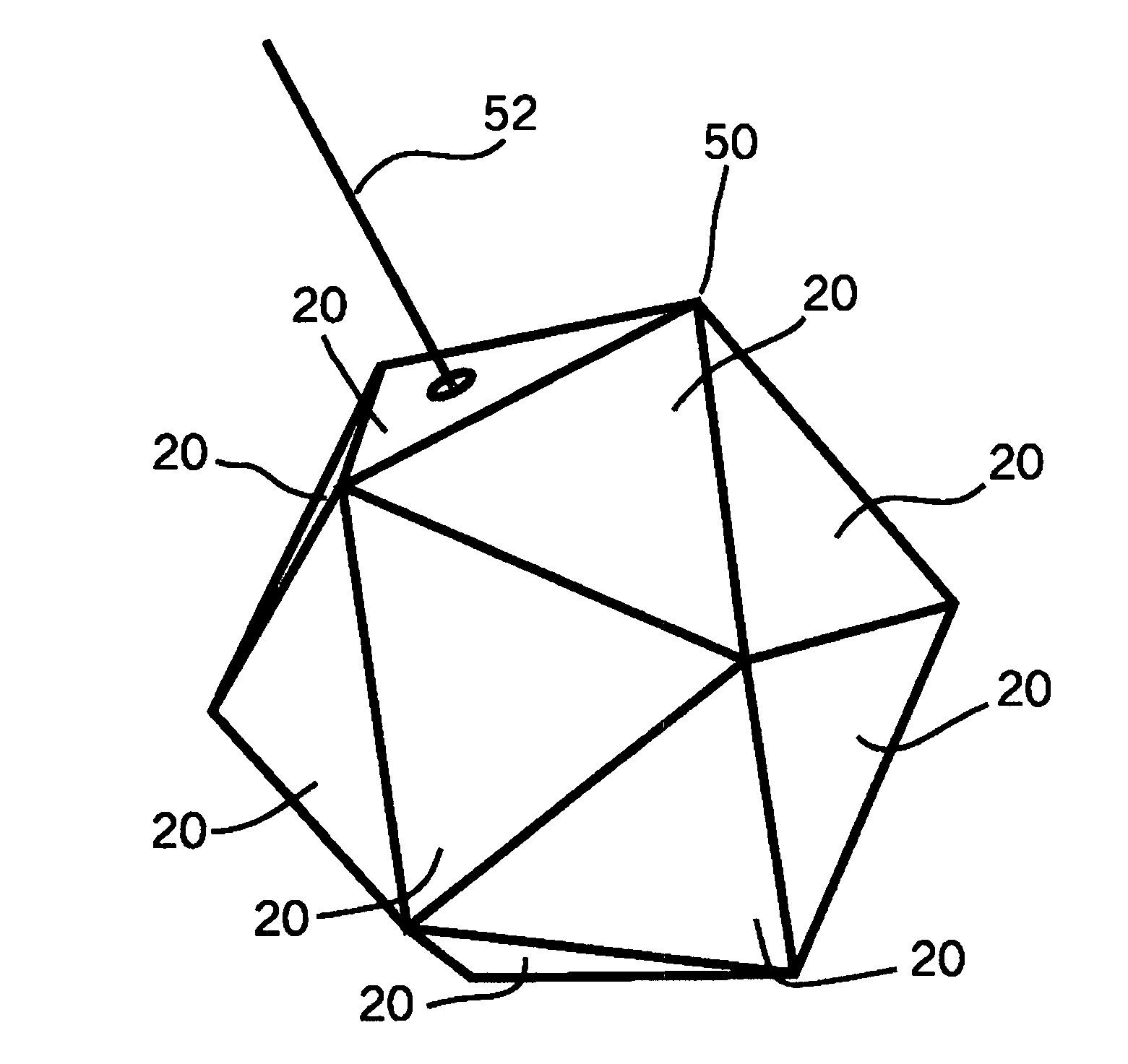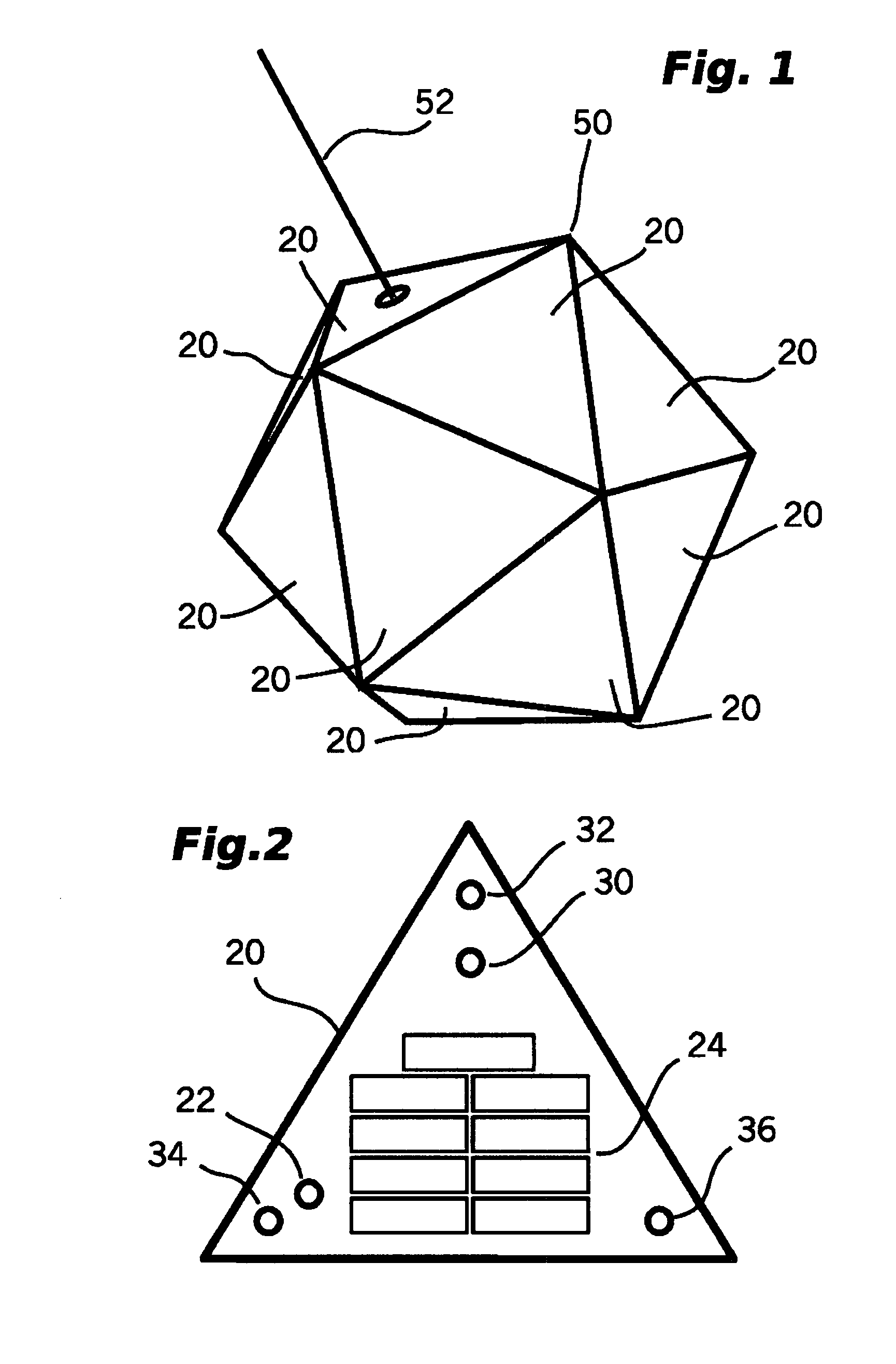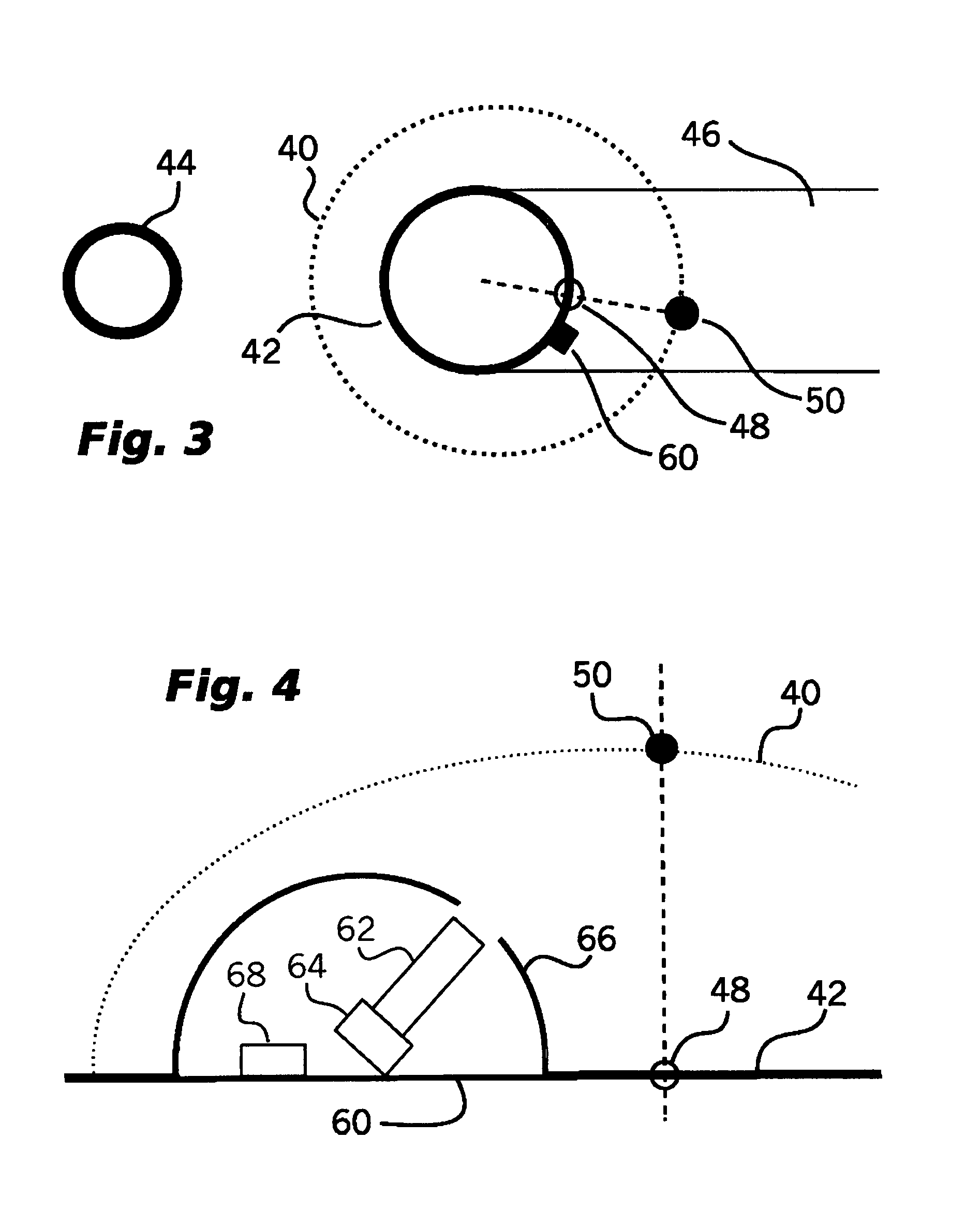Satellite downlink via patterns of uncollimated light
a technology of uncollimated light and satellite downlink, which is applied in the field of satellite communications, can solve the problems of high regulatory operation of radio transmitters in space, interference to terrestrial radio communications anywhere on the planet, and inability to control a malfunctioning radio transmitter in space, so as to eliminate safety and regulatory issues, the effect of precise attitude control
- Summary
- Abstract
- Description
- Claims
- Application Information
AI Technical Summary
Benefits of technology
Problems solved by technology
Method used
Image
Examples
Embodiment Construction
[0089]The present invention relates to satellite communications, specifically to the downlink of data through spacecraft modulation of an uncollimated light source observed at a ground station equipped with a tracking telescope and an imaging system.
[0090]FIG. 1 shows an illustration of the structure of satellite 50, according to a preferred embodiment of the invention. Satellite 50 is preferably a regular Platonic solid, such as an icosahedron, with a standard package of equipment on each satellite face 20. The availability of similar equipment on each satellite face 20 on a regular Platonic solid, such as the twenty faces of an icosahedron, provides similar functionality regardless of spacecraft orientation. Extending from the icosahedron is radio uplink receive antenna 52, for reception of radio communications. The interior of the satellite structure includes other equipment typical for spacecraft operations, such as a power storage device, a control system including a microcontr...
PUM
 Login to View More
Login to View More Abstract
Description
Claims
Application Information
 Login to View More
Login to View More - R&D
- Intellectual Property
- Life Sciences
- Materials
- Tech Scout
- Unparalleled Data Quality
- Higher Quality Content
- 60% Fewer Hallucinations
Browse by: Latest US Patents, China's latest patents, Technical Efficacy Thesaurus, Application Domain, Technology Topic, Popular Technical Reports.
© 2025 PatSnap. All rights reserved.Legal|Privacy policy|Modern Slavery Act Transparency Statement|Sitemap|About US| Contact US: help@patsnap.com



